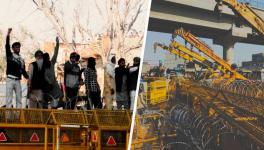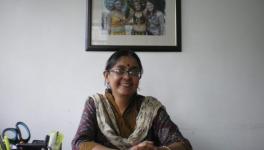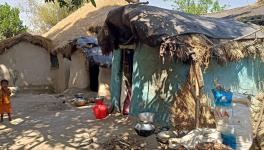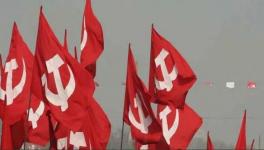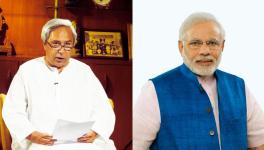'By Targeting Elgaar Parishad, Modi Was Getting Back at Justice Sawant'
Representational use only.Image Courtesy: Wikimedia Commons
Few outside Maharashtra had heard of the Marathi word Elgaar, let alone understood its meaning, until 2018. Elgaar was the name given to a meeting of people, or Parishad, convened at the Shaniwarwada Fort ground, Pune, on 31 December 2017, a day before lakhs of Ambedkarites were to visit Bhima Koregaon village from around the country. The date 1 January 2018 was special, for it marked the 200th anniversary of the battle of Bhima Koregaon, which the Ambedkarites frame as their victory over the army of Peshwa Baji Rao II (1775-1851). They perceive his reign and that of his ancestors as symbolical of the discriminatory Brahminical rule.
At the Elgaar Parishad, speeches were delivered, and cultural troupes sang songs decrying the caste system. The audience took an oath, administered by activist Harshali Potdar, they would never vote for casteist and communal forces. A day later, as people wended their way to Bhima Koregaon, violence erupted, leading to the death of one person. Soon, a narrative emerged that the speeches and songs at the Elgaar Parishad had instigated Ambedkarites to turn violent; that the Elgaar Parishad had a Maoist link.
The Elgaar Parishad was organised by two former judges—Justice BG Kolse Patil and Justice PB Sawant, both reputed for their judicial acumen and social activism. Sawant died on 15 February 2021. Eighty-year-old Patil still remains immersed in social activism with a vim typical of the young. On the fifth anniversary of the Elgaar Parishad, on 31 December, NewsClick spoke to Justice Patil on the controversy surrounding it. Excerpts:
Why did you and Justice PB Sawant choose to name the public meeting of 31 December 2017 as Elgaar Parishad?
The answer lies in the Marathi word Elgaar, which translates to “appeal”, a loud appeal, if you will.
Appeal against what?
Ours was an appeal against communalism and the four-fold varna system. The Bharatiya Janata Party’s Devendra Fadnavis was then the chief minister; his rhetoric and actions were communal in nature. Big public hoardings surfaced, stating that Devendra Fadnavis was the present-day Nana Fadnavis (1742-1800; an influential minister of the Maratha empire) of Peshwai. It was for these reasons we called his government the new Peshwai, or the new rule of Peshwas. The Peshwas were Brahmin by caste and were extremely oppressive of the Untouchables.
Years before 2017, I was the chief guest at a public meeting at Satara, where the Kabir Kala Manch put up a cultural show. They sang songs that were primarily against the social and economic exploitation of the poor. Let us face it, the poor in this country largely belong the Scheduled Castes and the Scheduled Tribes.
While the Kabir Kala Manch performers were singing, I was crying. One of the singers came over to me and asked why I was crying. I said their songs reminded me of my childhood.
My father was a marginal farmer. He would double up as an agriculture labourer on a farm owned by a Marwari. To supplement the family income, I joined my father on the same farm for four years, between 1956 and 1959. I would earn 6 annas. I have experienced exploitation, which was also the theme of their songs. Thereafter, Kabir Kala Manch members became my friends, and wherever they held their shows, I would attend. Sawant, too, had attended their programmes.
The 200th anniversary of the Bhima Koregaon battle was on 1 January 2018. We expected people, particularly the Ambedkarites, to visit Bhima Koregaon on that day. Sawant and I thought of inviting these people for the Parishad, or a meeting of people, to Pune, on 31 December.
When did you think of sending the invite?
It was late September. The idea was concretised early October. With the help of the Kabir Kala Manch, Sawant and I invited 250 organisations from all over the country. We, obviously, did not know most of them. There were discussions held and we settled upon naming the 31 December Parishad as Elgaar.
In other words, it was a meeting of people organised to give a loud appeal against the new Peshwai.
Yes.
And the challenge to the new Peshwai was because it represented the forces of casteism and communalism….
That had risen ever since Narendra Modi became Prime Minister in May 2014, and Fadnavis became Maharashtra’s Chief Minister later that year. Fadnavis, in fact, was more aggressive, more communal [this term Kolse Patil used for the politics of identity, whether anchored in religion or caste] than Modi in those years.
How did you raise funds for organising the Elgaar Parishad?
We were very fortunate. The Shaniwarwada fort ground had been hired by the Maharashtra Institute of Technology, Pune, for the morning of 1 January. On that day, the MIT wanted to celebrate the 75th birth anniversary of scientist Raghunath Anant Mashelkar, a former Director General of the Council of Scientific and Industrial Research. We were to use the same venue on 31 December. They approached us saying they would prepare the place, decorate the stage, pitch tents and place chairs—and we could use it for the Elgaar Parishad. Otherwise, they would have had no time to prepare the venue for their function. We, obviously, agreed. All arrangements were made and handed over to us.
Was the meeting organised at the Shaniwarwada Fort on 31 December just a cultural programme peppered with speeches?
Yes, speeches were delivered, artists performed, and the audience took an oath that was administered by activist Harshali Potdar that they would never vote for the forces representing communalism. Radhika Vemula, mother of Rohith Vemula, the Hyderabad student whose suicide, in 2016, led to an outrage countrywide, smashed four earthen pots, arranged vertically, one over the other, which was a symbolical representation of the hierarchical caste system.
Were you present there at the Shaniwarwada fort?
Yes, I was there, right through the meeting. Justice Sawant could not come as he fell sick before the event, and was admitted to a hospital. [Bharipa Bahujan Mahasangh leader] Prakash Ambedkar was there. Young leaders like Jignesh Mevani and Umar Khalid were invited because the organisers felt the youth leadership should also be represented. For security reasons, Jignesh and Umar stayed at my residence.
Did any of the speakers allude to violence?
There was not a word about violence. Whenever and wherever I speak, I do so within the framework of the Constitution and its values, and from the perspective of India’s history of nonviolent movements.
What was the theme of your speech at the Elgaar Parishad?
The Elgaar Parishad was held in the backdrop of the 200th anniversary of the Bhima Koregaon battle, which saw a regiment of the British Army, dominated by the Mahars, defeat the Peshwa’s army. Twenty-two Mahars fighting for the British Army died in the battle. I, therefore, started my speech by saying that when the Bahujan Samaj (the majority comprising the SCs, Other Backward Classes, and religious minorities) is given a sword, as was the case in the Bhima Koregaon battle, they fight and win. When you give us the pen and allow us to write, we produce a marvellous Constitution, as Dr BR Ambedkar did. In other words, I said the Bahujan Samaj is very competent, but you (the upper castes, the new Peshwai) have suppressed them. I also spoke about the torture and exploitation I underwent in my childhood.
Sudhir Dhawale is known to have been one of the principal organisers of the Elgaar Parishad. Apart from him, who among the 16 arrested under the Unlawful Activities (Prevention) Act for the Bhima Koregaon violence were present at the Elgaar Parishad?
Jyoti Jagtap, Ramesh Gaichor and Sagar Gorkhe—all of them booked under the UAPA and now in prison—are members of the Kabir Kala Manch. They performed during the Elgar Parishad. Apart from them and Dhawale, not one person booked under the UAPA for the Bhima Koregaon violence was present at the Elgaar Parishad. Not one person, I repeat.
I would have not been able to recognise most of those arrested in the Bhima Koregaon violence case. For instance, I did not know how Sudha Bharadwaj looked like before she was arrested. The same goes for Vernon Gonsalves and Arun Ferreira. Actually, apart from advocate Surendra Gadling, I would have been unable to identify any of them in an identification parade. Gadling was defending the Delhi University teacher Prof GN Saibaba as well as Dhawale in a Nagpur court. They were being badly treated in jail. Dhawale, in fact, went on a fast there. I went to Nagpur to meet them. It was then that I met Gadling. And yes, I met Anand Teltumbde at a function.
What was the genesis of the violence at Bhima Koregaon, on 1 January?
There is a samadhi (tomb) of Chhatrapati Sambhaji Maharaj, son of Chhatrapati Shivaji Maharaj, at Vadhu Budruk, a village very near Bhima Koregaon. The story goes that after Sambhaji was defeated by Aurangzeb, his body was torn into pieces and thrown away. It is said the Mahar community collected the body parts and stitched them together. Until recently, all believed his last rites were performed by Govind Gopal (Mahar) Gaikwad, who defied Aurangzeb’s order to do so. The samadhi of Gaikwad is adjacent to that of Sambhaji Maharaj. Both are situated in Maharwada, a separate colony of Untouchables, at Vadhu Budruk.
Now, Sambhaji Bhide, chief of the Shiv Pratishthan, and Milind Ekbote, head of the Hindu Ekta Manch, negate the bravery of Govind Gaikwad. The tussle between the Mahars and the Marathas has been fomented by both Bhide and Ekbote over the last 25 years. Vadhu Budruk’s Marathas claim it was their ancestors, the Shivale (which means stitching in Marathi) Deshmukhs, who performed the last rites of Sambhaji Maharaj, in 1689.
On the night of December 28, a board was placed at the samadhi of Gaikwad, declaring that it was he who performed the last rites of Sambhaji. Next morning, the board was missing, and a concrete umbrella-like structure over the samadhi was found damaged. There was tension. But peace was, somehow, maintained. Between then and 31 December, Ekbote visited the area and even held a press conference. He reportedly told people that they should not even give water to the Ambedkarites when they come visiting Bhima Koregaon village on 1 January. These incidents prompted the Marathas of Bhima Koregaon to collect stones in anctipation of violence, which occurred because of the instigation of Bhide, Ekbote and their followers. This is mentioned in the report of the 10-member committee appointed by Vishwas Nangre-Patil, Inspector General of Police (Kolhapur Range), which includes rural Pune, immediately after the incident. [However, Nangre-Patil later said the committee had not been appointed by the police.]
Since you deny any link between the Elgaar Parishad and the Bhima Koregaon violence, why do you think the then BJP government of Maharashtra and the Modi government chose to target the Elgaar Parishad?
The Brahminical forces work in indirect ways. Pune is their bastion; it is where many retired IAS, CBI, IB officers settle down. The Elgaar Parishad was directed against these forces. It took them eight days to link the Elgaar Parishad with the violence. Bhide’s disciple, Tushar Damgude, filed a complaint claiming that the Elgaar Parishad was funded by Naxalites, and wrote nasty posts on Facebook. It was on the basis of his complaints that raids were conducted and activists arrested months later. The intention of these Brahminical forces is to crush all movements against the new Peshwai, which is deeply invested in keeping intact the caste system.
Ekbote was, at least, arrested and then released on bail. Bhide was never arrested.
Bhide is very influential. He is close to Modi. There are photos showing Bhide receiving Modi at an airport.
Why has the BJP labelled those booked under the UAPA for the Bhima Koregaon violence as Urban Naxals?
The term is bogus, invented to arrest 16 activists who have been fighting for the rights of the oppressed—and are opposed to the BJP government. Through their arrest they wanted to defame the Elgaar Parishad and also Justice Sawant.
Why did the BJP want to defame Justice Sawant?
They wanted to defame him because of the Concerned Citizens Tribunal’s report on the 2002 Gujarat riots. Justice PB Sawant, Justice VR Krishna Iyer, and Justice Hosbet Suresh were the members of the tribunal. I was also requested to join the tribunal, but I had to say no, for I had already become a social activist. They toured Gujarat over three months and recorded evidence of eyewitnesses.
I want to quote what the Concerned Citizens Tribunal said. “The Tribunal is also of the view that Shri Modi [the then chief minister] is guilty of crimes against humanity and of genocide under the relevant international statutes. It is the view of the Tribunal that the Chief Minister and his concerned ministers are not fit to hold public office since they are guilty of the aforesaid crimes [the 2002 riots]. The Tribunal is further of the view that the interests of the country are not safe in the hands of people like Shri Modi and of those who hold his views and have his attitude and approach in public life.”
Now, let me illustrate to you how Modi’s mind works. In the weeks following the Elgaar Parishad and the violence in Bhima Koregaon, Justice Sawant received a letter from Modi. Sawant did not open the letter. He said to me that he did not want to read Modi’s nonsense. With Sawant’s permission, I read the letter. Modi’s letter praised Sawant’s contribution to the building of the nation. He wrote this even as the BJP and the investigative agencies were falsely blaming the Elgaar Parishad for the violence at Bhima Koregaon. It was Modi’s way of conveying to Sawant that his role in the Tribunal has not been forgotten. By targeting the Elgaar Parishad, Modi was getting back at Justice Sawant.
What can you say about the Modi regime? It tampered with the computers of Father Stan Swamy, Gadling and Rona Wilson, another accused booked under the UAPA, and planted evidence against them.
What do you say to the fact that more than four years have passed since the activists in the Bhima Koregaon violence case were arrested, and the court has yet to frame the charges in the case?
They do not have an iota of evidence against them. That’s why they are not in a hurry to send the case for trial. The National Investigation Agency, which was handed over the case soon after the Shiva Sena-Nationalist Congress Party-Congress come to power in Maharashtra, visited me also.
Why did they not arrest you?
(Laughs) You should ask them.
Did the NIA not question you?
When they came over, I asked them: Have you come to record my statement? In that case, I will say Modi and Shah are murderers. I told them that my guru, Sawant, had recommended that Modi should be tried for murder. They were left speechless. You know, earlier, when the Anti-Terrorism Squad of Maharashtra was investigating the Bhima Koregaon violence case, its members would visit Sawant and repeatedly claim that Kabir Kala Manch activists were connected to the Maoists. Sawant would admonish them, saying they need not teach him who was what. Sawant was 90 years old then. Two years later, he died. Nevertheless, he would cite his age and mine (I was 78 then) and say we were well-experienced in these matters. They would say, ‘Kabir Kala Manch has fooled you, betrayed you.’ We never agreed with them.
The only person in the Elgaar Parishad who, in the past, had a link with the Maoists was Sudhir Dhawale, and he was acquitted of all the charges pressed against him. The entire story that the Elgaar Parishad led to the Bhima Koregaon violence has been concocted.
(Ajaz Ashraf is an independent journalist.)
Get the latest reports & analysis with people's perspective on Protests, movements & deep analytical videos, discussions of the current affairs in your Telegram app. Subscribe to NewsClick's Telegram channel & get Real-Time updates on stories, as they get published on our website.









